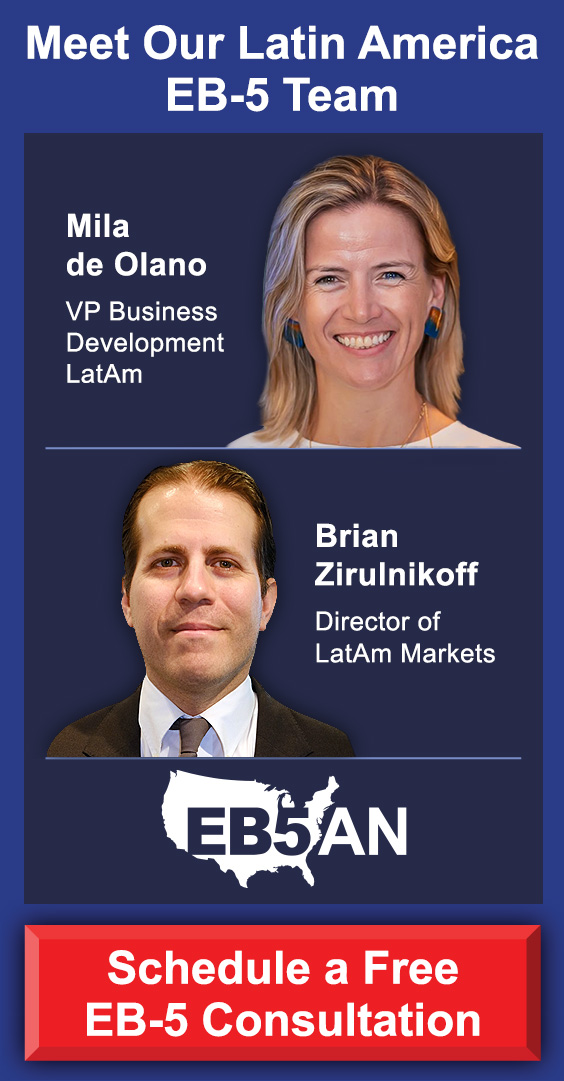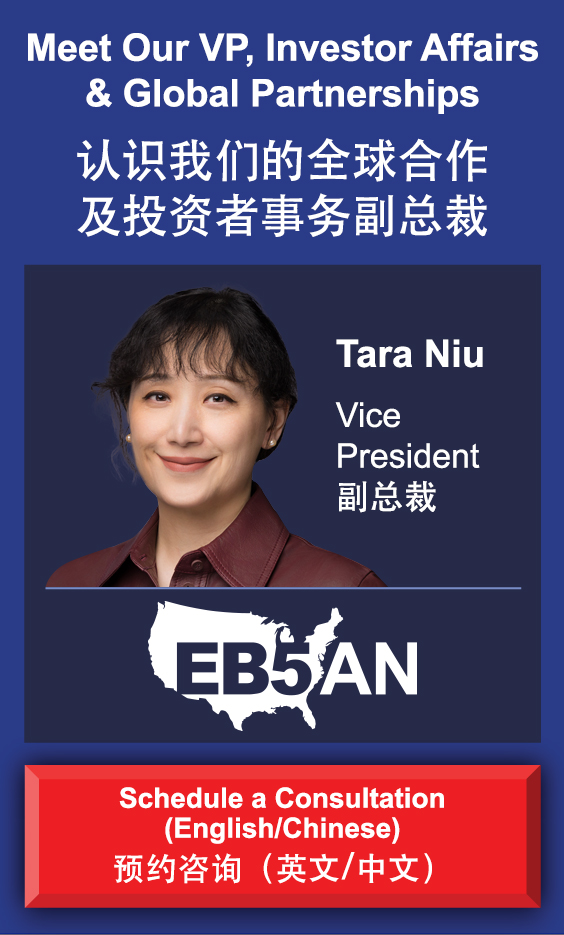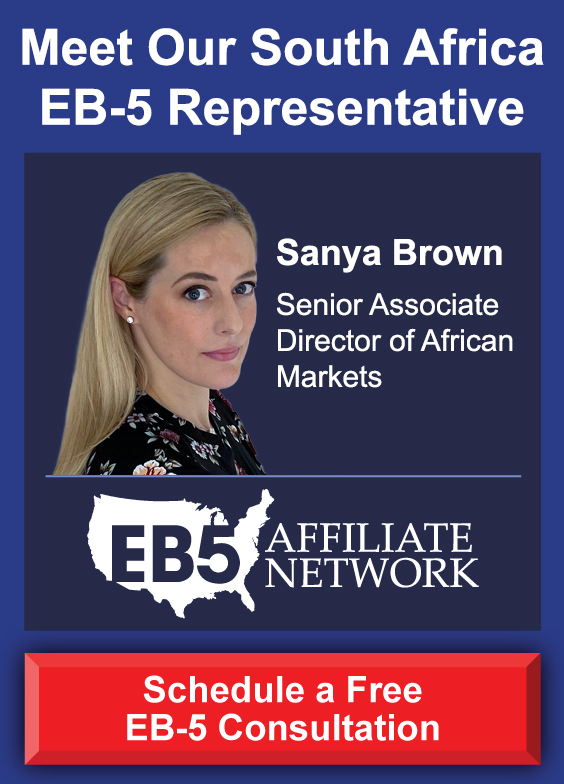Of all the U.S. work visa programs meant to attract skilled foreign nationals, the H-1B visa is arguably the most high-profile and successful. The H-1B program has become a cornerstone of U.S. immigration policy because it provides a reliable pathway for highly educated foreign nationals to work in specialized roles, especially in the tech, engineering, and medical fields. U.S. employers rely heavily on H-1B visas to fill skill gaps in STEM professions, where domestic supply often falls short of demand. According to the Cato Institute, “In 2021, the median wage for H-1B workers was $108,000. Nearly 70 percent of workers hired in 2021 had an advanced degree, and 90 percent of the jobs were in ‘STEM’ fields,” illustrating how employers depend on this talent to fill critical technical roles.
The program’s success also stems from its role in attracting not just temporary workers but long-term contributors to the U.S. economy. Many H-1B holders later transition to permanent residency, founding companies, creating jobs, and driving innovation. According to the National Foundation for American Policy, “A study found that 55 percent of America’s startup companies valued at $1 billion or more have at least one immigrant founder, and almost 80 percent of America’s unicorn companies have an immigrant founder or an immigrant in a key leadership role, such as CEO or vice president of engineering,” underscoring how former H-1B workers have become central to the next generation of American enterprises.
Despite its effectiveness in attracting highly skilled professionals, the H-1B visa imposes highly restrictive conditions, limiting H-1B workers’ employment and travel opportunities. H-1B workers can only work in one particular field, and they must be sponsored by a qualifying employer. International travel can be difficult.
And if an H-1B worker is laid off, as has been the case for thousands of tech workers, he has only 60 days to find another H-1B position. Securing a new job with a company willing to provide H-1B sponsorship is often impossible to accomplish in only 60 days.
Otherwise, laid-off H-1B workers will have to leave the United States along with their families, potentially uprooting years of career and personal growth in America.
That’s why many H-1B workers are turning to a more secure, permanent way to live and work in the United States. They are turning to the EB-5 program, a fast and direct path to a U.S. Green Card.
As Green Card holders (that is, permanent residents), H-1B workers and their families will no longer rely on employer sponsorship. They will be able to travel internationally, work in any industry, start a business, work part-time, or not work at all. They will be free to pursue career growth in the United States without the restrictions of a temporary work visa.
The EB-5 program fills this need by offering investors the potential to receive Green Card approvals in only months, not years. It has now become the industry standard for investors in rural EB-5 projects to receive I-526E approvals within 12 months.
What is more, EB-5 investors can file for work and travel permits and receive them in as little as 30 days, granting them flexibility regarding employment and international travel.
EB5AN is proud to regularly work with talented H-1B professionals who are looking to become permanent residents of the United States.
“The H-1B program brings the best of the best in STEM and other fields to the United States,” notes Sam Silverman, managing partner of EB5AN, “but it’s a temporary visa, and many H-1B workers look to build their careers in the U.S. permanently.”
“At EB5AN, we’ve helped many H-1B workers successfully transition to an EB-5 Green Card and leave behind the uncertainties of employer sponsorship.”
As part of our series of testimonials with EB-5 investors, we have interviewed several H-1B workers. In this post, we share highlights from episodes featuring H-1B workers.
If you are an H-1B professional looking for a permanent way to remain in the United States, this content will be highly useful in helping you get started on the EB-5 immigration process. You’ll learn how H-1B workers came to the decision to pursue EB-5, the challenges they encountered, and their strategies for immigration and financial success.
You’ll discover why so many H-1B workers trust EB5AN to help them achieve their long-term immigration goals in the United States.
How I Got My EB-5 Green Card as an H-1B Worker: Interview with Ram (Twin Lakes Rural EB-5 Project)
Getting a Fast I-526E Approval Through EB5AN’s Rural Projects: Interview with Gurpreet (Twin Lakes Rural EB-5 Project)
How to Switch From H-1B to EB-5 Green Card: Interview with Prakash (Rocky River Rural EB-5 Project)
New Career and Academic Opportunities Through EB-5: Interview with Milan (Twin Lakes Rural EB-5 Project)
Break Free From Your H-1B Visa; Make the U.S. Your Permanent Home
How I Got My EB-5 Green Card as an H-1B Worker: Interview with Ram (Twin Lakes Rural EB-5 Project)
See Ram’s U.S. Green Card below:
Key Quotes from Ram’s Interview:
- “After realizing that an EB-2 visa would take an unbelievably long time to process and approve, I started looking at alternative ways to get my Green Card.”
- “Ask lots of questions and really get clear on the specifics of the project you want to invest in. Some projects look great on paper, but ask questions about the variables that could make this project fail.”
- “I would definitely recommend EB5AN. It was great working with you because you provided a lot of detail and responded to my questions quickly. In addition, the videos that you provide helped me increase my knowledge on the whole EB-5 process, and I really appreciate that.”
Ram, an Indian national and seasoned software engineer, spent over a decade in the United States navigating the complexities of the U.S. immigration system. After earning a master’s degree on an F-1 visa, he transitioned to an H-1B through employer sponsorship and, in 2017, entered the EB-2 Green Card backlog. But as the years passed, it became painfully clear that the EB-2 queue for Indian nationals offered no certainty—only wait times stretching decades into the future.
Ram’s turning point came during the pandemic, when he began closely analyzing visa bulletin trends and USCIS data. By his own calculations, even in a best-case scenario, he faced a 20–35 year wait under the EB-2 category. As a tech worker on H-1B, the stress of maintaining visa status—especially in a volatile job market—prompted him to explore alternatives. That’s when he discovered the EB-5 Immigrant Investor Program, which offered both a more direct path to permanent residency and greater career flexibility.
Throughout 2022, Ram immersed himself in EB-5 research. He focused on two key decisions: selecting a knowledgeable immigration attorney and choosing a high-quality EB-5 project. He ultimately retained Anahita George, a seasoned EB-5 attorney he discovered through a webinar hosted by EB5AN. Thanks to her guidance and Ram’s early preparation of source-of-funds documentation, they were able to file a complete and robust petition—more than 6,000 pages—within just two weeks.
When it came to selecting an EB-5 investment, Ram had specific criteria. He wanted a rural project to take advantage of visa set-asides and priority processing created by the EB-5 Reform and Integrity Act of 2022. He also insisted on working with a regional center with a strong compliance record and experience handling EB-5 cases from start to finish. After reviewing dozens of projects and legal documents—despite having no formal financial background—Ram chose EB5AN’s Twin Lakes project, a rural single-family home community developed by Kolter.
Several aspects of Twin Lakes stood out. The development is demand-driven, meaning homes are constructed as buyers commit, reducing market risk. The project also had a senior loan in place from a financially strong institutional lender, signaling that it had passed rigorous third-party scrutiny. Ram valued this oversight, especially as an individual investor without deep real estate expertise.
Perhaps most importantly, the project had already generated sufficient job creation to satisfy EB-5 requirements. Ram had no interest in gambling with his immigration outcome—after years in the EB-2 line, he was determined to choose a project where the immigration benefit was already secure. By investing in Twin Lakes, he minimized both immigration and investment risk.
That decision paid off. After investing, Ram received I-526E petition approval and—most importantly—has already been granted his U.S. Green Card. Thanks to the rural project’s visa set-aside and priority processing, he was able to bypass the traditional wait and finally achieve the stability and freedom he had been working toward for years.
To other H-1B visa holders stuck in long employment-based queues, Ram offers this advice: find the right attorney, educate yourself on the process, and don’t delay. Choosing the right EB-5 project—one that fits your personal risk profile and is backed by a strong regional center—is essential.
For Ram, EB5AN’s professionalism, responsiveness, and transparent documentation made all the difference. The Twin Lakes project offered exactly what he needed: a credible investment, job creation security, and a clear path to permanent residency. Today, Ram is not just an EB-5 investor—he is a U.S. Green Card holder.
Getting a Fast I-526E Approval Through EB5AN’s Rural Projects: Interview with Gurpreet (Twin Lakes Rural EB-5 Project)
Highlights of Gurpreet’s Interview:
- “[With EB5AN], the first and foremost thing for us, which clicked very well, was the focus on educating the investors themselves. Your website has a lot of information, great information. So that focus on educating the investors, that really clicked. I did not find any other regional center with that kind of depth.”
- “Twin Lakes, I invested in Fund IV, which I understand is the last fund for this particular project. So before me, there were 350 other investors already, and that itself is a big deal. 350 people believed in the project, and therefore, they invested in it.”
- “You have to pick the project carefully. That is the key piece. So do as much research as you can in figuring that piece out, because ultimately, all investments have risk, but as long as you pick the project right, at least you can hope to get your investment back. Even if it takes a couple of extra years than some of the more riskier projects, I would say that’s still better than not getting anything at all.”
Gurpreet, an Indian pharmaceutical professional working in New Jersey, had built a stable life in the United States under the H-1B visa. But like many H-1B workers, he faced an unsettling reality: one job loss could uproot his entire family. Employer sponsorship rules, visa transfer requirements, and limited grace periods created a fragile immigration status that couldn’t support long-term plans. The pandemic drove this point home when travel restrictions kept him from seeing his father one final time. That experience pushed him and his wife to seek a permanent solution. After evaluating all options, they turned to the EB-5 Immigrant Investor Program—a pathway offering stability, independence, and a faster route to a U.S. Green Card.
Although Gurpreet had an approved I-140 petition and prior L-1 experience, he knew that for Indian nationals, those avenues came with indefinite wait times. EB-5, by contrast, provided a direct route to permanent residency.
When it came time to select a regional center, Gurpreet conducted dozens of informational calls—but EB5AN stood out. From the outset, their website offered the most detailed educational content, FAQs, and investor testimonials. Direct communication with a managing partner—even on weekends—convinced him that EB5AN valued responsiveness and investor trust. Transparent documentation and readily available financials gave Gurpreet and his advisors full confidence in the organization.
Among EB5AN’s offerings, Gurpreet chose the Twin Lakes rural loan project in Georgia. Over 350 investors had already backed the project, and he was impressed by the developer, Kolter Group, which had a reliable record of returning capital on time. The project had already sold more than 700 homes—evidence of strong market demand and credible job creation. Because Twin Lakes was classified as a rural project under EB-5 rules, it qualified Gurpreet for priority processing and a lower investment threshold, significantly speeding up his petition timeline.
What mattered just as much to Gurpreet as the project itself was transparency. EB5AN made available a full suite of project documents, including loan agreements, escrow terms, pro formas, and repayment guarantees—an openness Gurpreet did not find elsewhere. With full clarity, he completed his investment and filed his I-526E in August, just two months after hiring his legal team.
Thanks to the rural project’s fast-tracked status, Gurpreet received I-526E approval before his work and travel documents were even processed. His wife received her EAD and advance parole first; his own adjustment of status approval is expected shortly. The experience reassured him that a well-prepared case and a strong team can significantly shorten the EB-5 timeline, even in a challenging immigration environment.
For other Indian nationals stuck in H-1B or EB-2 backlogs, Gurpreet strongly recommends taking the EB-5 route—but only with the right guidance. His advice is clear: research your project thoroughly, choose a trustworthy attorney, and document every funding source from day one. With the right preparation and support, the EB-5 path can turn visa instability into permanent security.
In Gurpreet’s words, “EB5AN’s professionalism gave us peace of mind. We’re finally on track to secure our future in the United States—on our own terms.”
How to Switch From H-1B to EB-5 Green Card: Interview with Prakash (Rocky River Rural EB-5 Project)
Highlights of Prakash’s Interview:
- “EB-5 was the only other option that I could think of which has the current status for Indians as well in the rural and urban TEA. So that became very attractive.”
- “There is very little red tape with the EB5AN to get all the information about the project or the offering materials and then the subscription documents and all that. So the transparency was great.”
- “I was looking for something with a low risk and higher probability to get the EAD and the AP. So with all the news that you see with the new administration, all the things that are happening created some sense of urgency in me to get this EAD and AP […] The Rocky River project is of a lower risk and it’s also current for India.”
Prakash Yaji, an experienced professional from southern India, spent years building a life in the United States with his wife and young daughter. Like many Indian nationals in the U.S. on employment-based visas, he experienced the uncertainty and restrictions that come with nonimmigrant status. After several years first on an L-1 visa and then an H-1B, Prakash grew increasingly frustrated by the long wait times and instability inherent in the system—especially with an EB-2 priority date stuck in mid-2018. He wanted a permanent solution, not just for himself, but for his entire family. That’s when he turned to the EB-5 Immigrant Investor Program.
As an H-1B worker, Prakash had seen firsthand how fragile his status could be. His wife held L-2 and H-4 dependent visas, and although their U.S.-born daughter was a citizen, the family’s future was still tethered to job sponsorships and visa renewals. Alternative employment-based routes like the EB-1C proved unattractive due to relocation and growing backlogs. EB-5, however, offered a direct, current path to permanent residency—especially through rural projects. With that clarity, Prakash committed to pursuing an EB-5 Green Card.
At the same time, Prakash explored regional centers and EB-5 projects. While many projects focused on hotels or urban developments, he gravitated toward residential real estate—an area he felt more comfortable with. EB5AN’s transparent website, project details, and investor tools stood out. He particularly appreciated that he could access documents and ask questions via their online chat feature without being pressured to invest immediately. The information was accessible and easy to understand, allowing him to make a thoughtful and informed decision.
Among EB5AN’s offerings, the Rocky River rural project emerged as the best fit. A single-family housing development in a rural TEA, it checked all of Prakash’s boxes: reduced investment threshold, priority processing, and a flexible construction model. He appreciated that the developer could adjust the pace of construction in response to sales—much like major homebuilders such as Lennar or D.R. Horton. The target demographic (buyers aged 55+) also reassured him of the project’s financial soundness, as this group typically has steady retirement income. Prakash reviewed floor plans, sales history, and even drew confidence from the success of a similar prior project, Twin Lakes.
He was also strategic in choosing a rural project over an urban TEA to avoid future visa backlogs. EB5AN’s webinars and charts helped him understand the difference in retrogression risks and reinforced his belief that the rural queue would remain far more favorable for Indian nationals like himself.
Once he finalized his selection, the EB5AN team facilitated the investment process clearly and efficiently. After signing an NDA, he reviewed detailed financials and received his subscription documents. He transferred the required capital only after receiving confirmation from his attorney. Jordan from EB5AN helped answer Prakash’s questions about fund movement, escrow structure, and fund release mechanisms—all laid out in simple, understandable terms.
Reflecting on his experience, Prakash offers key advice for other H-1B workers: start early, choose an experienced attorney, and prepare your financial documents ahead of time. Keep your salary and investment accounts organized, and pick a project that aligns with your own knowledge or intuition. He emphasizes that EB-5 is not just an investment in a project—it’s an investment in a stable future.
Prakash wholeheartedly recommends EB5AN. Their clarity, structure, and transparency turned what could have been a complex process into a manageable, well-supported journey. Now on the path to permanent residency, Prakash has finally traded the temporary limitations of his H-1B for the peace of mind a U.S. Green Card brings.
New Career and Academic Opportunities Through EB-5: Interview with Milan (Twin Lakes Rural EB-5 Project)
Highlights of Milan’s Interview:
- “The main reason for doing EB-5 is that I want to get out of renewing my H-1B visa, every three years, and going through the visa process and all that. And another reason is for my son’s studies. For him to get admission into colleges is almost impossible if we are not citizens or permanent residents over here.”
- “I always faced a backlog for the H-1B Green Card. That’s why it’s very good that [thanks to investing in a rural EB-5 project], if the process goes fine, you are going to get the Green Card on time, so there is no [additional] waiting time.”
- “I would rate 100 out of a 100 for both EB5AN and Anahita. Without them, EB5AN and Anahita, I was expecting it to be very difficult process with a lot of roadblocks—but it was very smooth.”
Milan, a seasoned software engineer from India, had lived in the United States since 2014. Over nearly a decade, he navigated the demands of the H-1B visa system—renewing it every three years and facing the constant stress that came with a temporary status. While the H-1B allowed him to work legally in the U.S., it restricted his career mobility and created an atmosphere of uncertainty for his family. More than anything, Milan was driven by two long-term goals: career freedom for himself and a stable academic path for his son, who aspired to enter the medical field.
But the road to permanent residency through H-1B was steep and endless. As Milan watched his EB-2 priority date stagnate, it became clear that the traditional path to a Green Card was not viable. He also explored relocating to Canada or applying for an EB-1 visa, but each came with impractical barriers. Then he discovered the EB-5 Immigrant Investor Program—and everything changed.
His research led him to EB5AN’s Twin Lakes rural EB-5 project, which stood out for its transparency, strong job creation record, and reliable financial structure. Milan found helpful investor testimonials on EB5AN’s website, particularly from Siddharth, a previous investor whose insights reinforced Milan’s confidence in the Twin Lakes project. Notably, the project was being developed by the Kolter Group, a reputable builder known for delivering high-quality residential communities and returning capital to investors on schedule.
The project’s rural TEA status was another deciding factor. With 20% of EB-5 visas reserved for rural projects, Milan recognized the clear advantage: faster adjudication and a significantly lower risk of visa backlog. This was critical, given the years he had already spent under the H-1B system. The fact that Twin Lakes had already far exceeded the required job creation figures gave him further confidence in his petition’s chances.
Milan also appreciated the project’s practical design. Twin Lakes focused on single-family housing for retirees—a demographic with stable purchasing power and a strong demand for this type of community. He liked that the project was structured in phases, with most capital coming from bank loans rather than EB-5 funds. That structure reduced his financial risk and increased the likelihood of project completion and success.
To navigate the EB-5 legal process, Milan worked with immigration attorney Anahita George, who came highly recommended. Anahita became not just his legal advisor but a trusted partner in the process. She guided Milan through the preparation of his source of funds documentation, advised on which records to provide, and helped simplify what could have been an overwhelming process. From their first meeting in April 2023, it took only a month to prepare the necessary documents and file the I-526E petition—which was approved without delay, along with Milan’s work and travel permits.
Throughout the experience, EB5AN provided critical support. Milan relied on their website as his primary source of EB-5 information—from project overviews to immigration process explanations and investor testimonials. But what truly impressed him was their responsiveness. He highlighted the excellent communication he received from Ahmed Khan, a vice president at EB5AN, who promptly addressed his questions and provided insights into the project’s financial health, job creation metrics, and USCIS compliance.
Today, Milan enjoys the freedom to work as a consultant, free from the restrictions of employer sponsorship. More importantly, his son’s educational opportunities are no longer limited by immigration status—a major relief for the family’s long-term aspirations.
For other H-1B workers, Milan offers three key pieces of advice:
- Educate yourself thoroughly on the EB-5 process and USCIS requirements.
- Choose a regional center that values transparency and offers accessible, comprehensive information.
- Hire an experienced attorney early and stay financially organized.
Milan’s journey reflects what’s possible when smart planning, the right project, and strong legal and regional center support align. His story stands as a testament to how the EB-5 program can transform uncertainty into freedom—and open doors for generations to come.
Break Free From Your H-1B Visa; Make the U.S. Your Permanent Home
Every interview reaches the same conclusion: partnering with EB5AN on a well-vetted rural EB-5 project lets H-1B professionals trade visa anxiety for Green Card security in just months. Transparent documents, hands-on guidance, and seasoned attorneys helped Ram, Gurpreet, Prakash, and Milan secure rapid I-526E approvals while safeguarding their capital. If you’re ready to leave 60-day grace periods and decades-long queues behind, follow their lead—begin your EB-5 journey with EB5AN and move your family toward permanent U.S. residency today.
To get started, schedule a free consultation with EB5AN.








